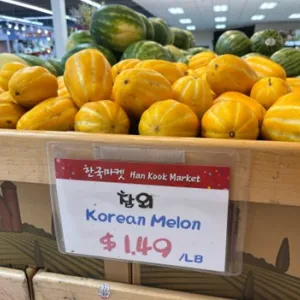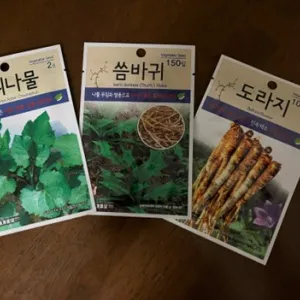Korean Seeds
Blog by Tina Saravia
I get excited when I see new fruit and vegetables at the grocery stores. Sometimes, I will buy them to sample; most often, I will find seeds to see if I can grow them.

Imagine my excitement when I was in Santa Clara recently, and across the street from our hotel was a Korean Supermarket. Early in the morning, I carefully crossed the big street at the light specifically meant for pedestrians and went into the store. Inside the store, I found teas of every kind, food items I was eager to try, and some I was not. I had a delicious tuna kimbap (triangle-shaped rice wrapped in seaweed). There was a little jar of “exotic” dried spice that turned out to be parsley. It’s added to a soup, not to the kimbap. All the items I looked at have names in English.
Then I saw it - a rack with seeds from Korea. The seeds are mostly edible with no English instructions. I researched them online and bought 3 packets. There are multiple names and descriptions online for these three plants. I went on the company website to make sure that I get an accurate identification and description. It’s very important to get the botanical name for each plant, because they may have the same common name, but not the same plant. It was time-consuming and challenging to use the website as it doesn’t have a search button. I had to go page by page to find the right plants. The shopping page with a search feature is only in Korean, and I don’t read Korean.

Eventually, I found the pages for each plant.
- The Korea Aster Chwinamul (Aster scaber, synonym: Doellingeria scabra)
- Sowthistle (Ixeris dentata) - but not the weedy sowthistle (Sonchus sp.) we see in our gardens.
- Bell flower (Platycodon grandiflorus)
There are minimal descriptions and growing instructions on the website for each plant. So I’ll have to keep researching.
Meanwhile, I’ll start to sow them in little containers.
